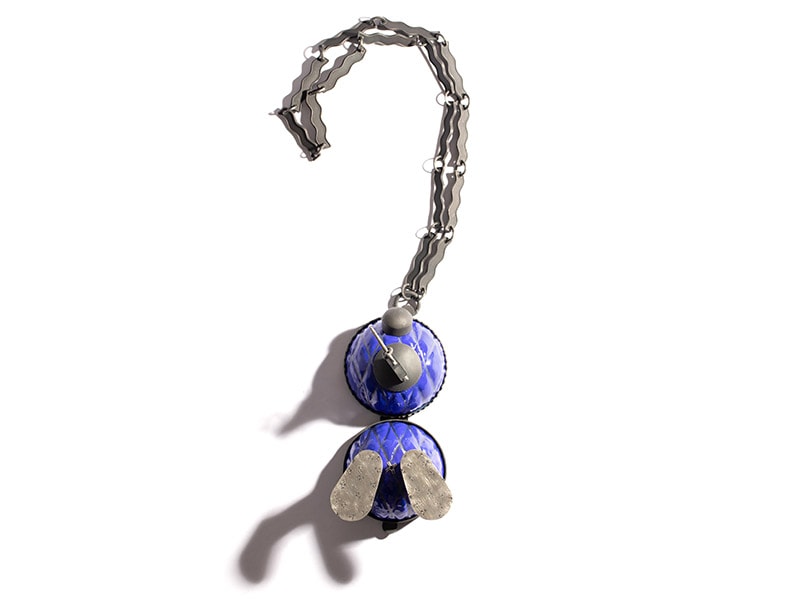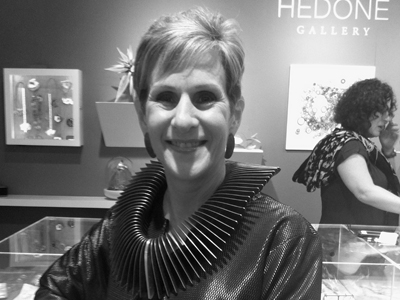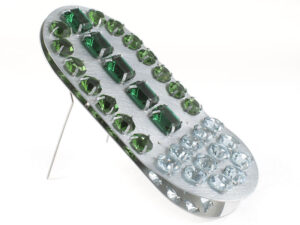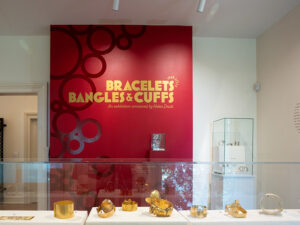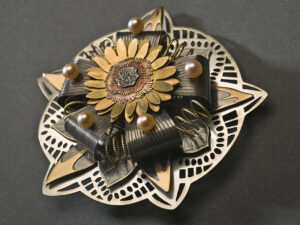More than 100 international artists applied for this year’s Young Artist Award. Aaron Decker was chosen as one of the finalists. He received an unrestricted cash award of US$1,000 and exhibited his work in Platina’s booth at Schmuck, in July 2022. This summer, the Danner Foundation acquired work by Aaron Decker titled fool me twice. The demi-parure was part of Decker’s second solo exhibition with Ornamentum and was one of the many works placed into collections, including cut my teeth (at Yale Art Gallery) and lil bomb (private collection).

AJF’s Young Artist Award acknowledges promise, innovation, and individuality, advancing the careers of rising artists. The competition was open to makers of wearable art age 35 and under who are not currently enrolled in a professional training program. Judging was based on originality, depth of concept, and quality of craftsmanship. This year’s jurors were 2020 AJF Artist Award winner MJ Tyson (US); collector and gallerist Karen Rotenberg (US); and educator and curator Chequita Nahar (The Netherlands).
This is the fourth of our interviews with the honorees. Read the interview with Young Artist Award winner Mallory Weston here. Our interview with finalist Taisha Carrington is here. Check out Marion Delarue’s interview here.
Decker’s work represents a group of outstanding pieces of contemporary jewelry. We asked him to tell us a bit about his background and thoughts on the future of the art jewelry field.

Bonnie Levine: Congratulations on being one of the five finalists of the 2022 Artist Award competition. What an accomplishment! Tell us a little about yourself. How did you become interested in jewelry, and what inspires your work?
Aaron Decker: I became interested in jewelry through my grandfather. He was a clock smith who opened his own shop after years working in a shoe factory. When I was young, I’d spend time tinkering with his tools, moving tiny parts around with tweezers, and often breaking things in the process. My parents were in the military, so we bounced between coastal bases every two years, making the time I got to spend with my grandfather something rare and cherished. I still remember getting an overdue haircut at Buzzy’s with him and him teasing me about my unkempt “teenage” look.
I lost a lot when he passed in 2010. In hopes of finding a continued connection with him, I took a jewelry course at Maine College of Art. I had been studying English literature and writing at the University of Southern Maine, but a strong urge led me to an art department and a jewelry class—it was the closest I could get to watchmaking. As it turns out, it was the first thing I fell in love with. It clicked, it made sense, it just worked, and I felt like I could express myself and experience the challenge of the methodology. To my parent’s dismay, I dropped out of my English major, went to art school, traveled the world looking at jewelry, made my way to Cranbrook Academy of Art for my master’s, and now work full time as a product development manager for Shinola Detroit, while aggressively pursuing my studio practice.

My work is embedded in my youth. When you grow up on military bases, you get desensitized to violence, war, the military. I draw from a number of sources: childhood toys, memories of being on base, camouflage, guns, bombs, Polly Pockets, etc. I play with several ingredients and force myself to confront something that I discover in the work, in the content.
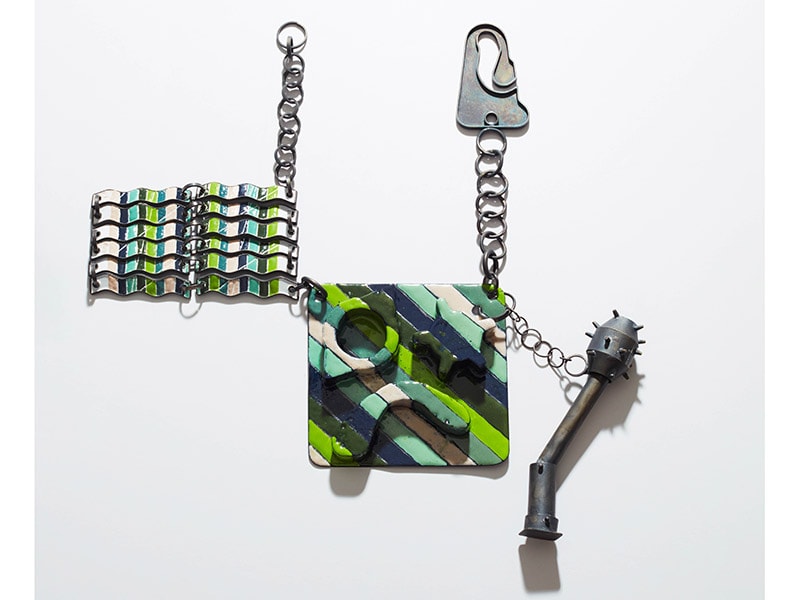
What does being a finalist mean for you? Do you think it will influence you going forward?
Aaron Decker: First, I want to thank the committee and AJF. I am overjoyed and humbled to be a finalist. It motivates me to continue pursuing new work, an energy easily depleted while working alone in a studio with only my thoughts. Being a finalist means I have energy and support to continue. I’ve had moments in my career where people have extended gifts for my studies, purchased works, supported my practice in a connection—all those things influenced how I push forward. This recognition is more fire in my belly. I think it has a huge influence and I cannot wait to watch all my co-finalists’ and winner’s trajectories.

Tell us about the work you applied with.
Aaron Decker: I applied with a body of work that premiered at Ornamentum in 2021. The exhibition, it’s (not) all fun and games, comes from experiences I had when I was a teenager. My father had noticed some things “off” about me, some feminine tendencies. And in response, he had me watch a movie about John Wayne Gacy, a serial murderer who raped and slaughtered at least 3 young men and was believed to be a closeted homosexual. The message was clear: if you were queer, you were a clown, you were a killer, you’d get found out.
In this body of work, I tried to make clown patterns, morphological ability of identity and parts, and a palpable, malevolent presence. This set of pieces wasn’t cathartic, but it did make something tangible: to see that experience, to reclaim it, to preserve it as objects. I’ve often explored this line of inquiry, which I worry relates to many queer people: “What am I hiding, who am I hiding it from, how can I hide it better?” That moment in my childhood made me want to hide, made me want to avoid being a queer clown because of the fear others had for a single figure.
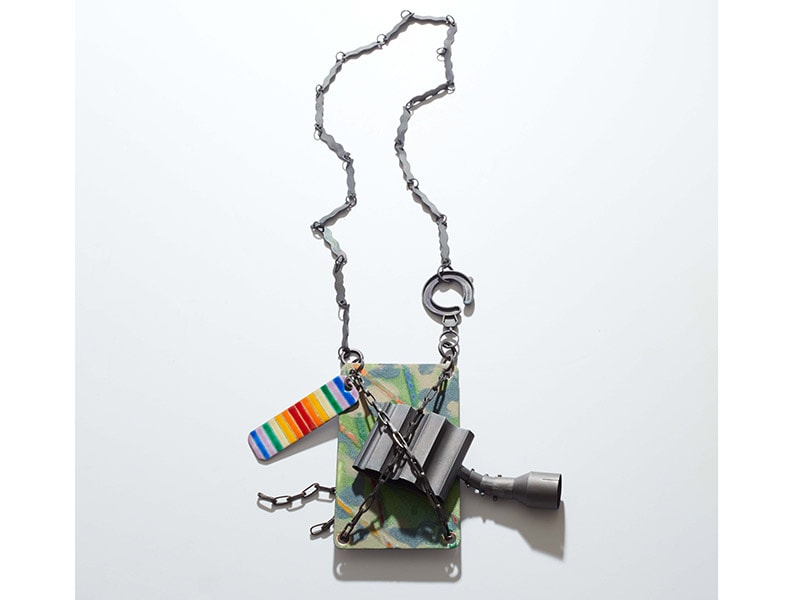
The works play between components and fully formed works. They’re fluid objects, taking their beings less seriously, and resigning themselves in the prospect of being apart from themselves. Metal keychains, enamel treated as a less serious material, toys made from nickel, copper, and glass.
Being queer, I tend to think of things as unresolved, in the process of making, or being undone, and that applies to the techniques I use. Enamel and metalwork have openings that can be exploited because they are such settled, canonical techniques. People struggle to find ways to approach these disciplines and techniques new ways; my solution has been just to address enamel as one with a serious historic past open to be taken less seriously, to be undermined by poor treatment, and then to approach metalworking as though I am making “found” objects. In two ways I am trying to take the piss out of the material. These material traditions are like my dad: he tells me what I “should” be doing and I sit in my teenage self and say, “Screw that!”
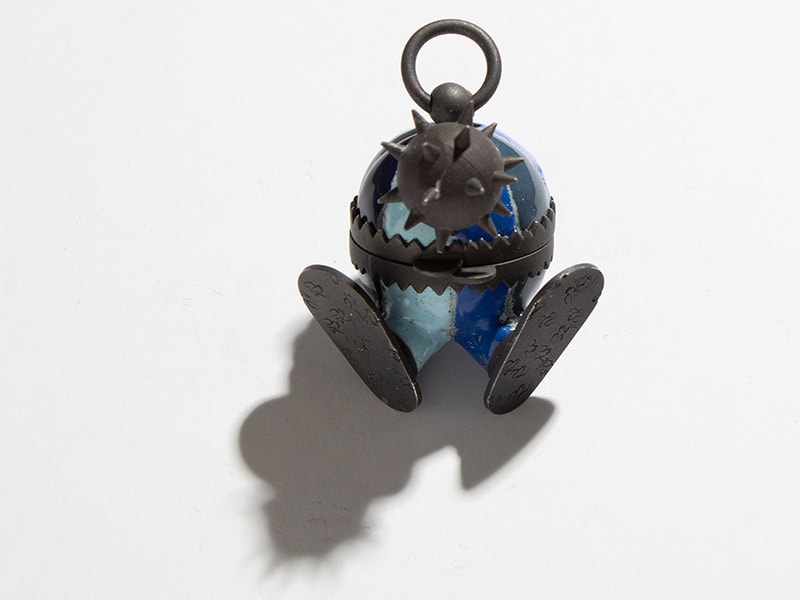
What excites you about the art jewelry field?
Aaron Decker: The potential of art jewelry and the crafts broadly is astounding. I remember in grad school discussing questions like, “Who is making interesting work?” or “Is the field just dying?” The attitude underlying these questions fueled my practice. It pushed me to make. Jewelry has a rich history, an amazing group of thinkers, individual artists without formal training coming into the field, and a lack of a concrete definition. What is art jewelry? It’s exciting. The unknown is exciting.
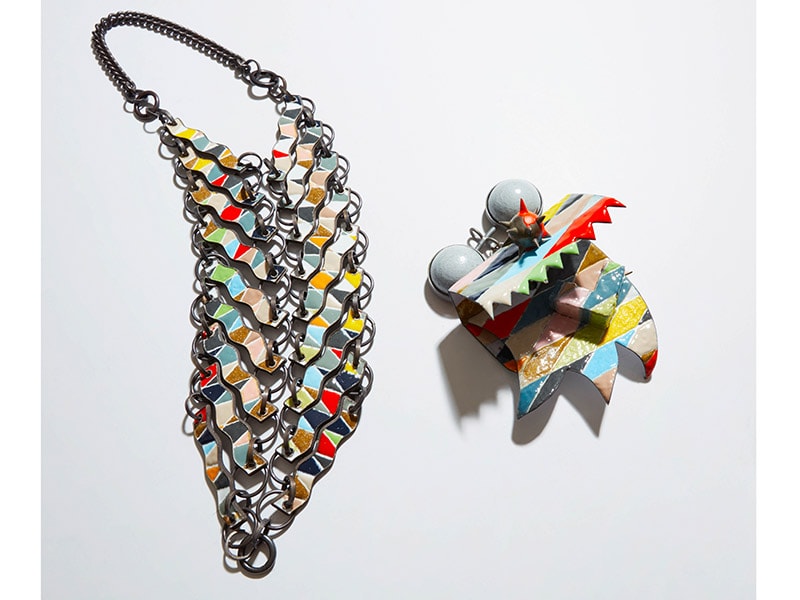
Any frustrations that you see or have experienced?
Aaron Decker: Perhaps this misreads the question, but I want to highlight a frustration I believe is common for many contemporary young artists. I struggle daily to balance the competing demands of my studio practice and work life. I had the privileged opportunity to attend two private art universities. I was certain I needed to study at these institutions if I wanted to become a studio artist, and am better for it. But to do so, I took on debt, as do most students at these schools when presented with the chance to pursue their passion. Today, I work full-time just to ensure the interest [on the student loans] doesn’t spiral out of hand; my practice gets shoved into night hours and weekends, after I come home tired from my corporate position.
My successes, exhibitions, and recognitions experienced as a young artist feel strung together by long periods of treading water, where that future for which I attended art school to begin with—to be a full-time practicing studio artist—remains out of reach, on the other side of a mountain of debt I must first overcome. As someone with a relatively successful practice, I struggle with understanding how to make art jewelry a sustainable future. Does this inform how we think about the numerous young artists whose practices falter early in their careers? We as a community often bemoan the death of craft—I’m frustrated that we engage with that conversation so easily without openly and honestly talking about what changes would help support a generation of artists committing to craft as a career.

Where do you think the art jewelry field is going? Are there new and exciting trends that you see?
Aaron Decker: I think jewelers today engage in more commercial/wearable works and I think it’s a realistic shift due to the job markets, economy, student loans, number of galleries, etc. I am very excited about that. There is a ton of bad commercial and fashion jewelry. I want more of the artists I see making incredible work to show the industry what art jewelry is made of and how it can improve upon commercialized pieces.
I am also excited by the lean into socially engaged, politically oriented, and materially conscious works. The materiality and wearability of jewelry is overdue for rich discussion. I am humbled by the numerous artists whose work I admire, and I’m grateful I get to call them my peers.
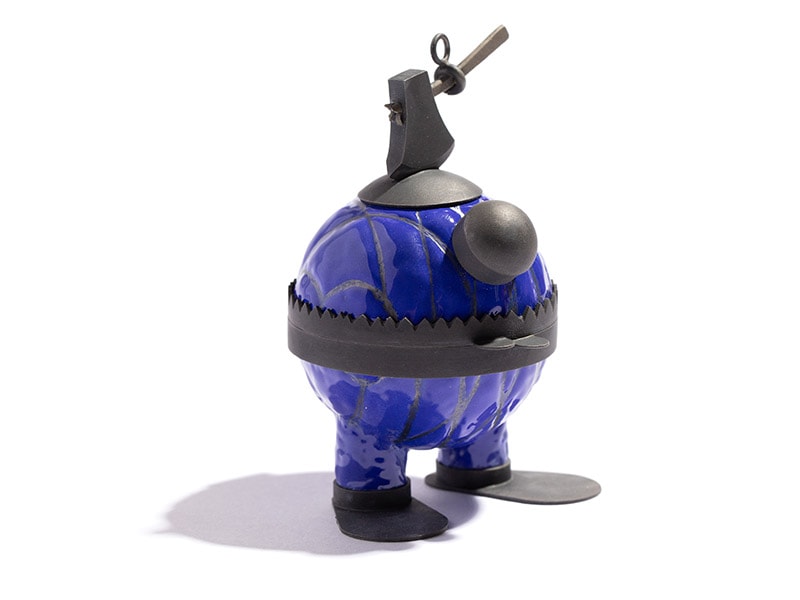
If you could write a master plan for your practice, where would you like to be five years from now?
Aaron Decker: I would love to be in my studio making my work for as many hours a week as I’d like. Not just because it can sustain my living, but because I love to be in the chaos of thought, make, repeat. I want kids, and to be where I am now mentally in a body of work—a bit lost, a bit excited, a bit frustrated, and [with] an itch to make—it’s all I can ask for.
Congratulations again, Aaron! Thank you very much.

